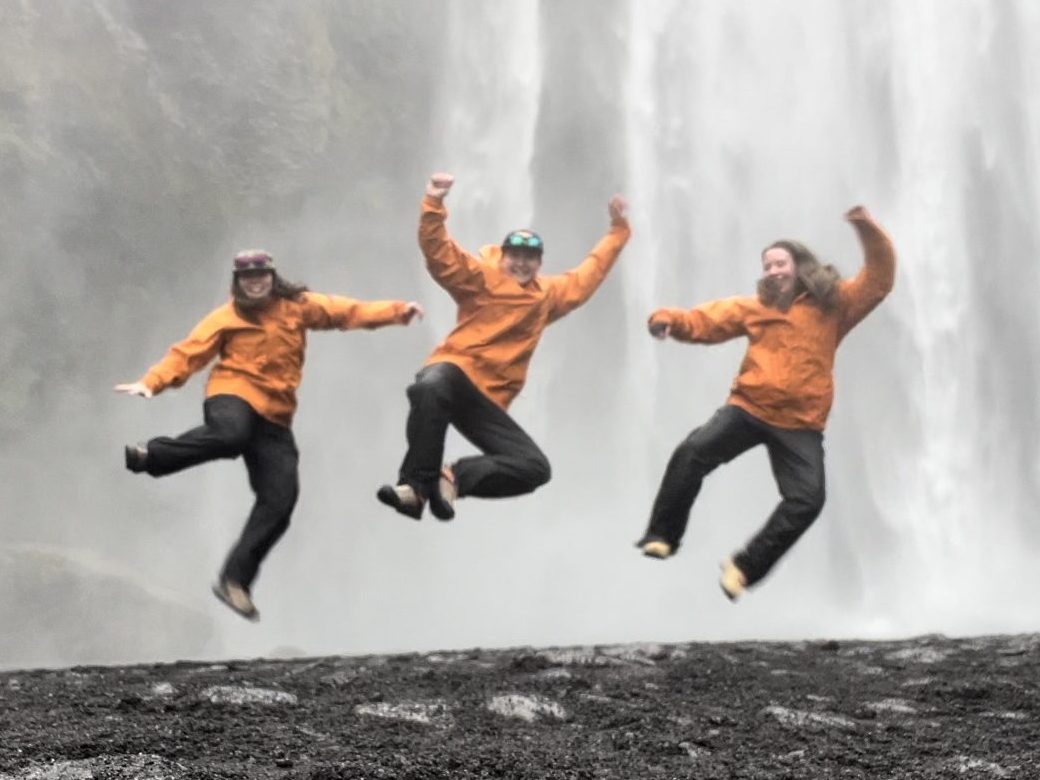

*cue How To Train Your Dragon theme*
(no seriously do it: https://open.spotify.com/track/2QTDuJIGKUjR7E2Q6KupIh?si=b7191c74625f4fc1)
Welcome to Professor Principato’s Lab, where we study glaciers and glacial erosion worldwide. From Iceland and Canada to the fridge in the lab, understanding glacial dynamics are important for understanding climate change! (and sometimes, how to save your samples from impending icy doom).

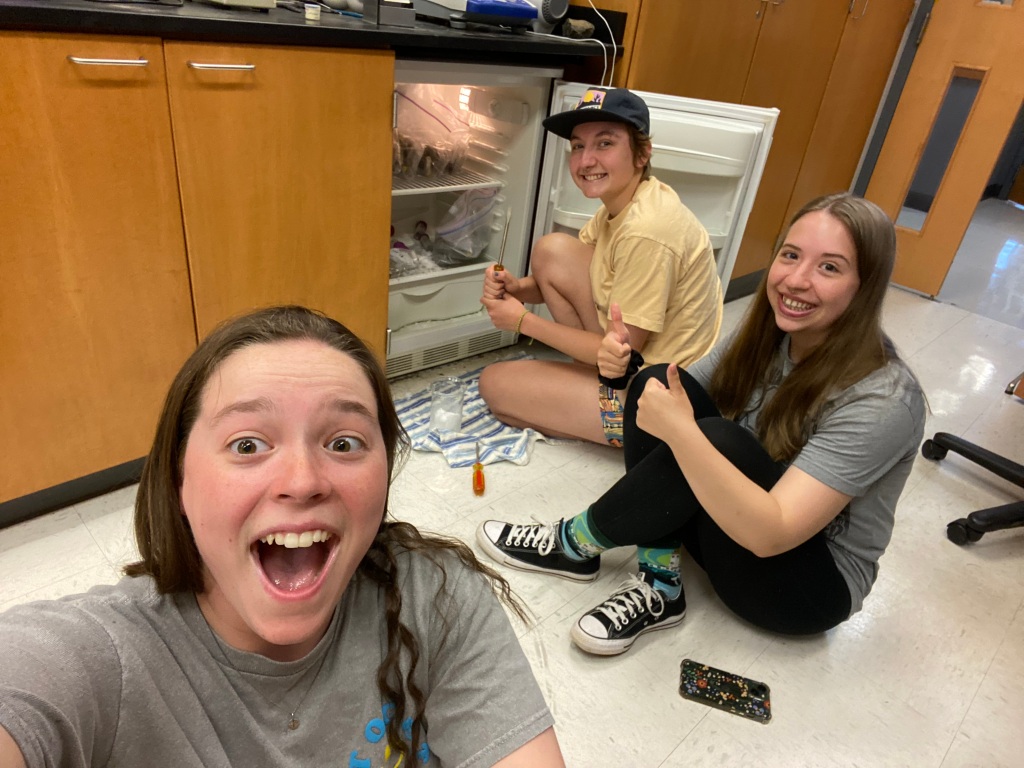
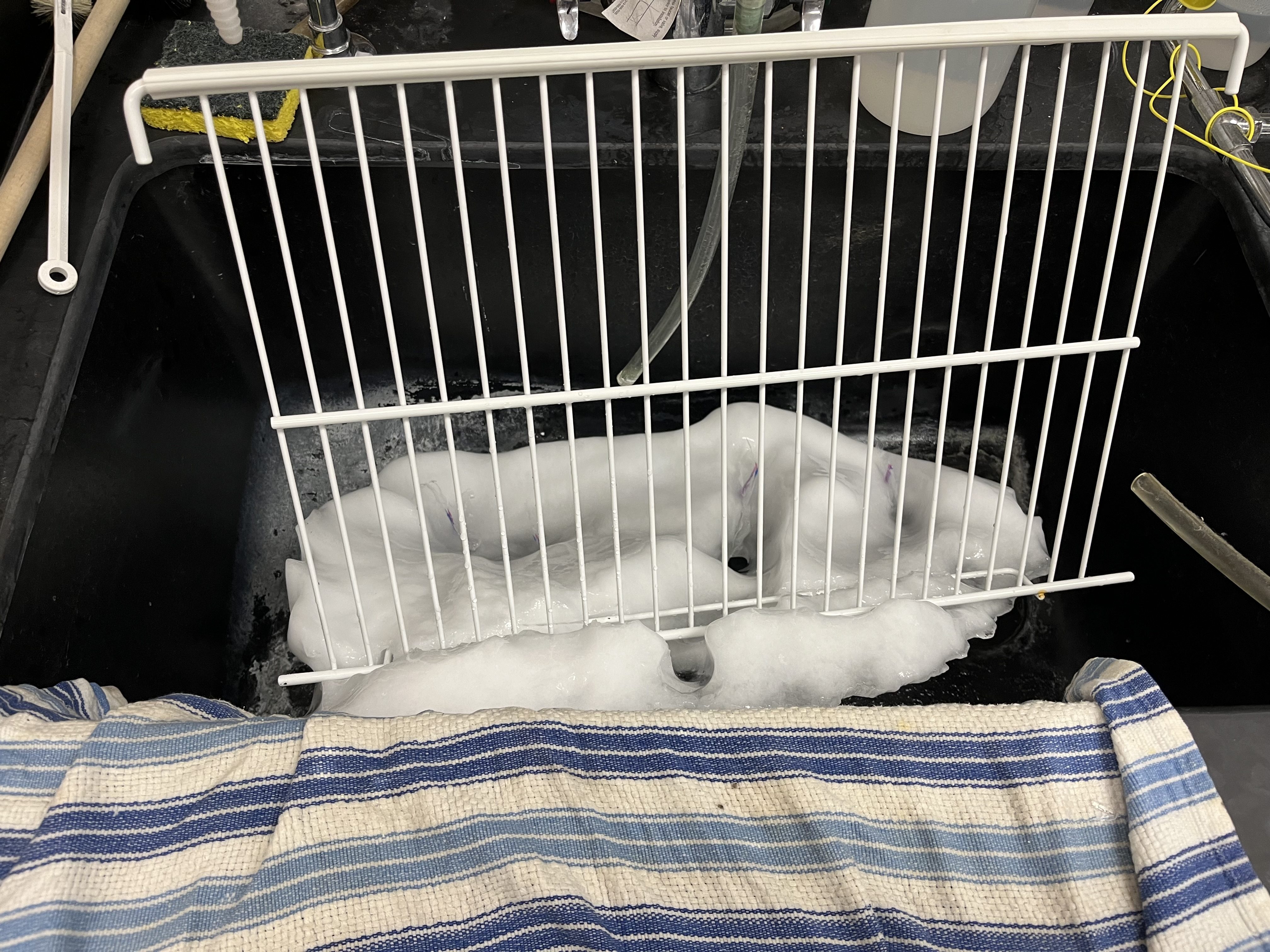
Before we talk about our work as a lab, lets meet the homies…


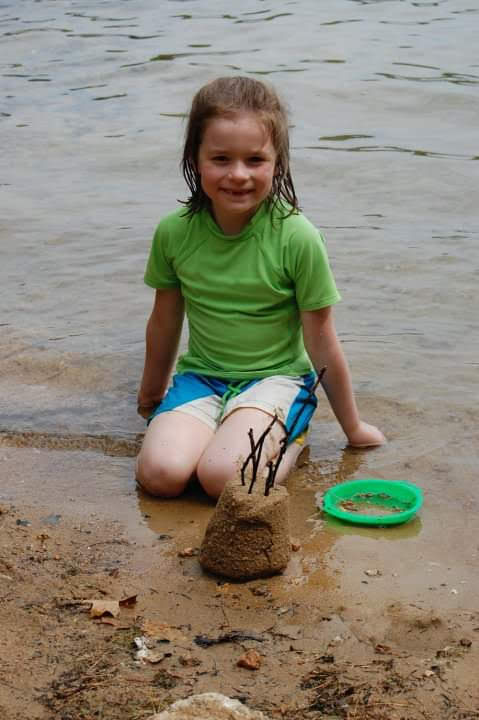
We’ve got some cool things going on in the lab this summer, but before we talk about our big trip, let’s get into what we’re doing on campus.
Carissa: My project examines glacial erosion as it relates to paleo-ice streams and the elongation and orientation of lakes. Ice streams are regions of fast-moving ice within an ice sheet which are associated with the formation of many glacial landforms, including ice scour lakes. Ice scour lakes form via quarrying, a process in which basal melting and refreezing allow glaciers to pluck out large pieces of bedrock. This process leaves behind large holes which, over time, fill with water and become lakes. The goal of my study is to use lakes formed by ice scour in regions with and without paleo-ice streams to further understand ice stream dynamics. I am examining ice scour lakes formed by the paleo-ice streams of the Laurentide ice sheet, a large ice sheet that covered much of Canada and the Northern United States during the Pleistocene Epoch. I am analyzing the morphology of the lakes using ArcGISPro and comparing parameters such as elongation ratio, parallel conformity, and lake density between multiple sites.


Holly: My project focuses on striations and grooves, which are created by the abrasion process of glacial erosion. Basically, as the glacier moves along the bedrock, it picks up little rocks which leave scratch marks, or striations. So even after the ice is long gone, we can rework the path of ice flow. The goal of the project is to ground-truth modeling studies such as Hansen, et al. (2023) and Zoet, et al. (2024) which discusses the process of abrasion and how glacial morphology can provide information about the subglacial stress conditions that produced the striations and grooves. I am examining rock lithology, age of bedrock, ice sheet history, topography, and other variables as they relate to glacial erosion and formation of striations and grooves. I’m collecting data in Iceland, Pennsylvania, New Hampshire, and New York. During data collection I’m measuring area, length, width, depth, and orientation of the striations and grooves. Supplementing my fieldwork, I’m creating 3D models, orthophotos, and a GIS database to conduct analyses to quantify the striations and formulate connections across geographic locations.


Riley: In the lab, I focus on the sediments creating the striations and grooves. Till, which is composed of unlayered sediments of many sizes, can tell us about glacial movement and striations. We’ve collected samples of till in both Iceland and the USA, and now I’m examining clast size of pebbles present in close proximity to striations and grooves to determine if rock properties affect the way striations form. In addition to grain size analyses, I’m conducting sedimentological analyses in the lab to measure properties such as water content, Munsell color, carbon content measured using loss-on-ignition, and rock type.

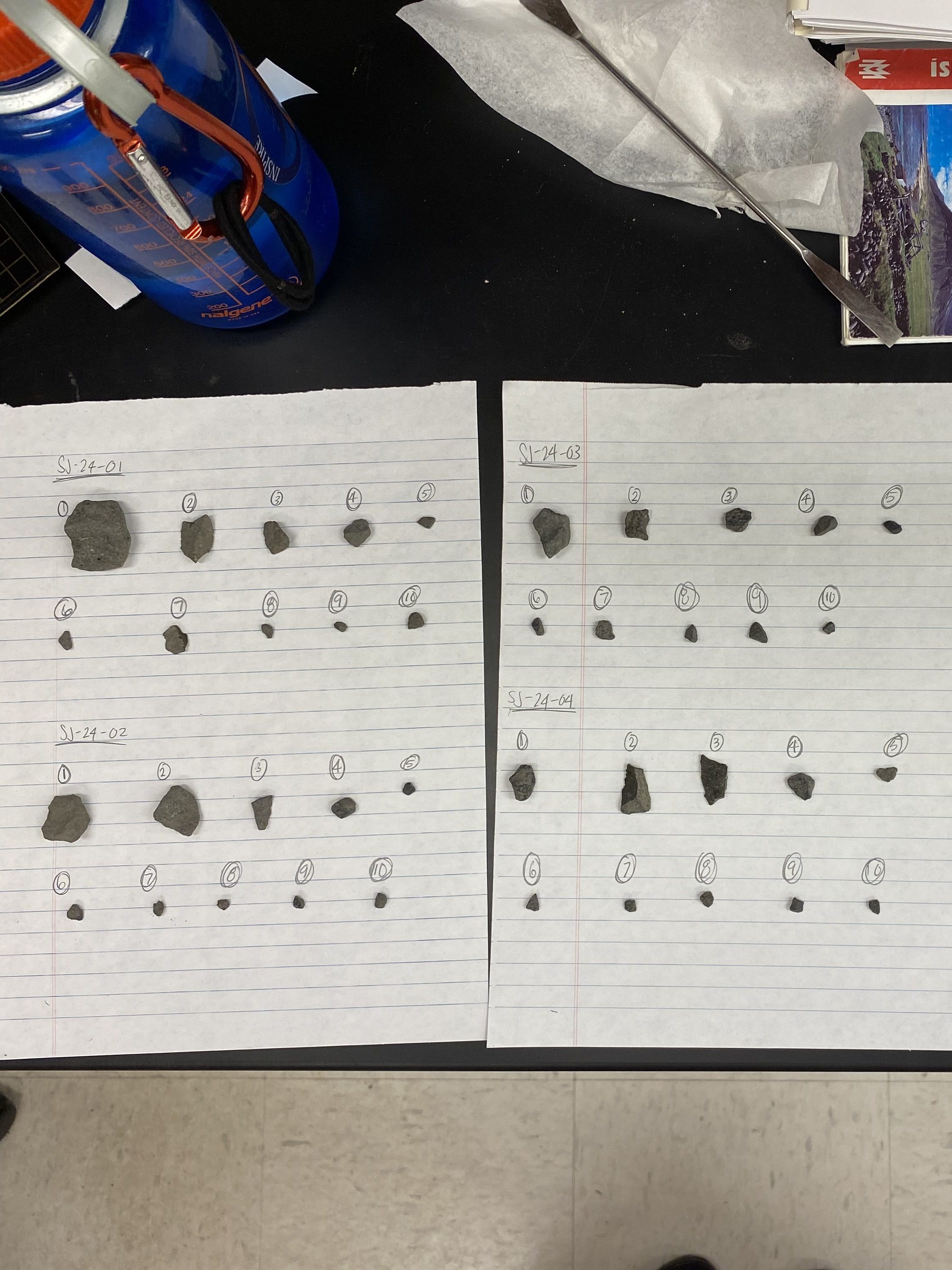
The Trip™
In May, our lab took a jump over the pond to Iceland for 6 days, which was super cool and epic. Although it’s not as cool as going there yourself, we’ll give you a quick tour of our itinerary (and recommend some places you should go if you visit: AKA not Krónan – we’ll get into that one later)
When travelling there are a lot of important things, food being one of them. The better the food is, the better the trip is (at least in our opinion). Some of the food highlights included chocolate (like seriously guys this chocolate was phenomenal), skyr (think like yogurt but better), homemade bread + jams (do I even need to explain this one), and black licorice (just kidding we were not fans of this 🤢, way too salty). We also totally loved the cheese and ate so much of it. Like so much cheese. Think like 2 big blocks, 2 bags of shredded cheese and another 8 slices. So. Much. Cheese. (totally worth it, although we don’t recommend if lactose intolerant).


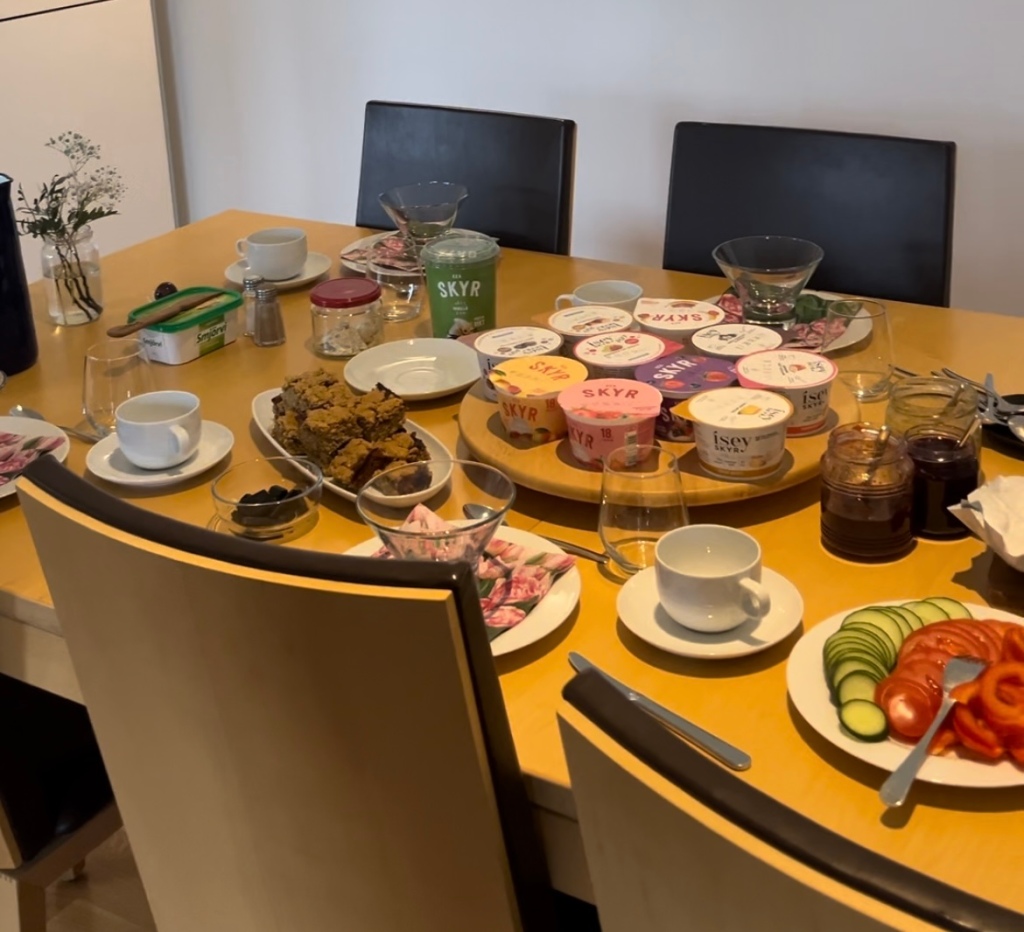
Quick note on the same line of food before we get into some of the cool sites. Grocery shopping is a critical method of obtaining food, and we recommend Bónus as the grocery store of choice rather than Krónan because the people in Krónan are absolutely cutthroat (also Bónus has a better mascot). Everything you know about grocery store etiquette in the US does not apply inside Krónan’s walls. Somehow we were always in someone’s way, even when we were pulled over in the aisle. I wouldn’t have put it past someone to take an item out of another person’s cart instead of going to the aisle and finding it themselves. From this experience I’m (Riley) starting to think that road etiquette and grocery store behavior are linked (Icelanders are crazy drivers).
Okay on to the cool sites!
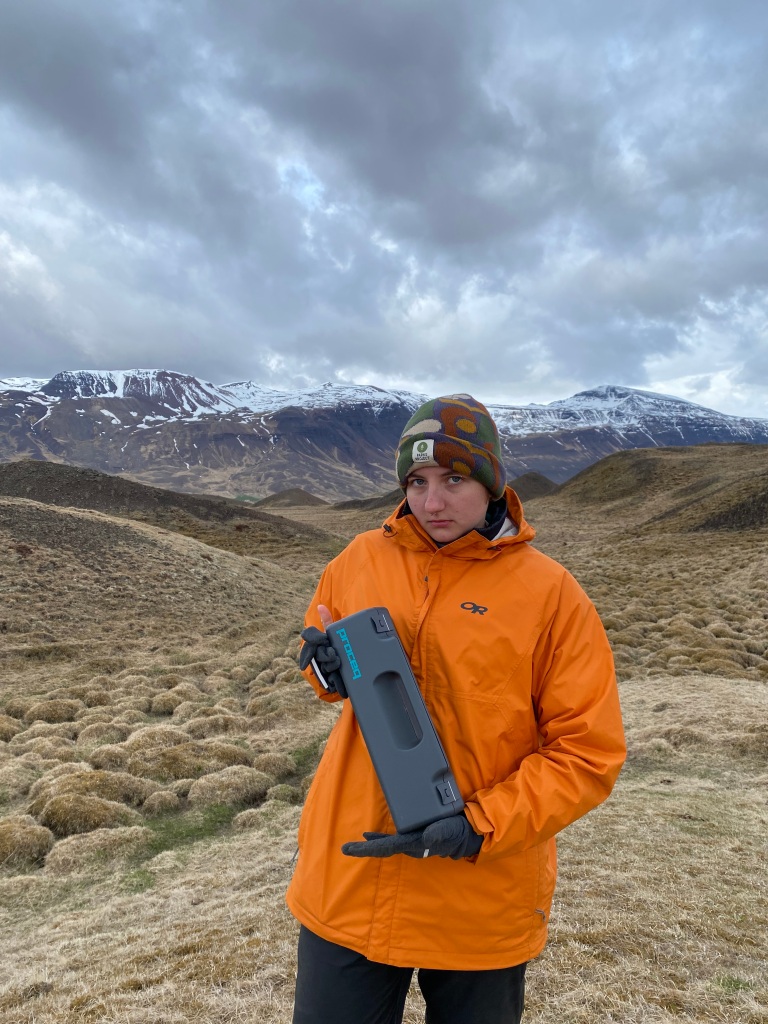
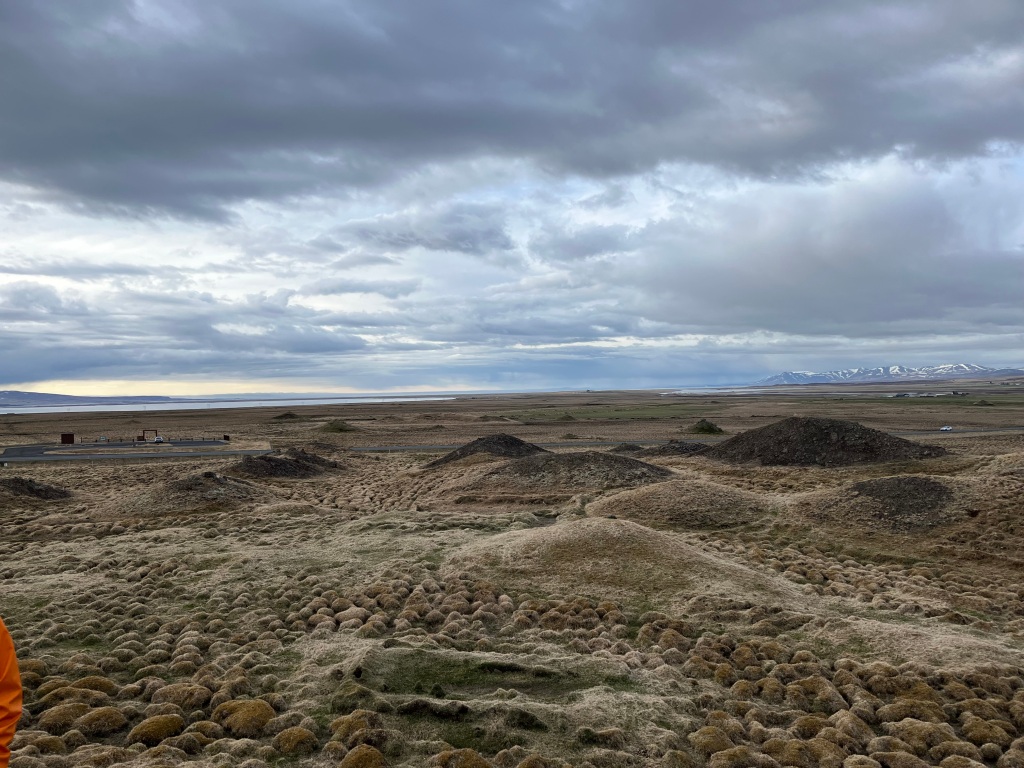
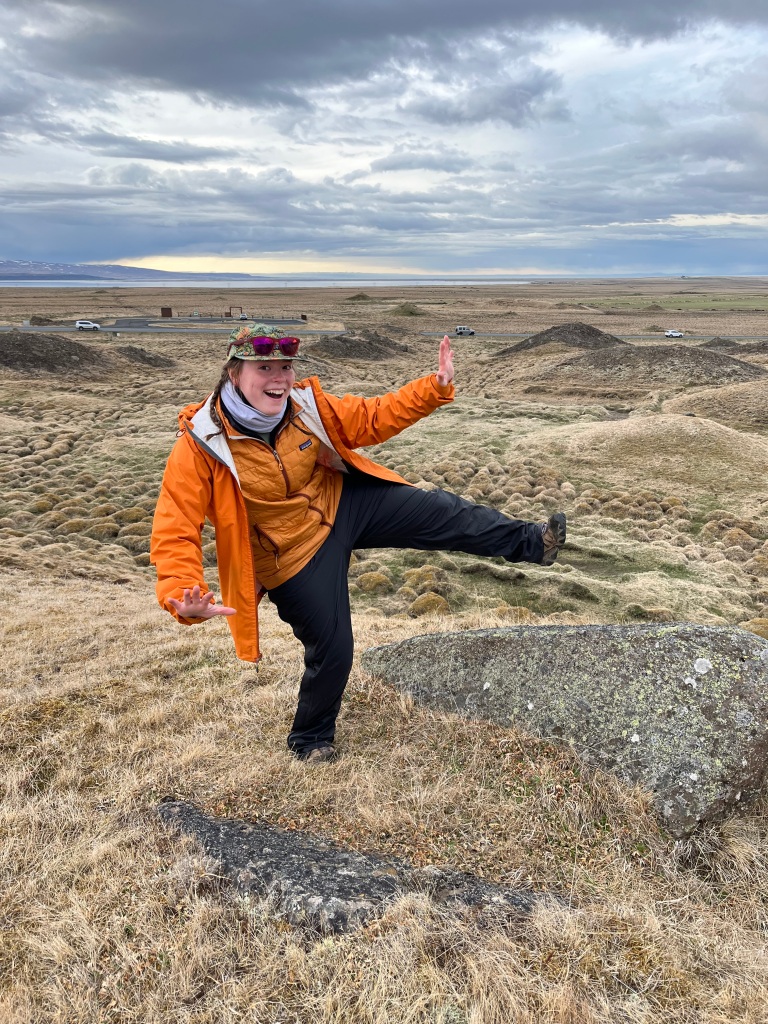
- Hummocky terrain (conveniently next to the site of the last execution in iceland)
- Hummocky terrain references a geologic area that is super bumpy on the surface (think like the moguls on a ski course or sand dunes)
- This area had some phenomenal moss, a lot of horse poop, and what looked like the remains of old houses (which was super cool)
- We gathered some data here to look at how weathered rocks were and attempt to date them. To do this we used a tool called a Schmidt Hammer, which measures the rock’s rebound rate.
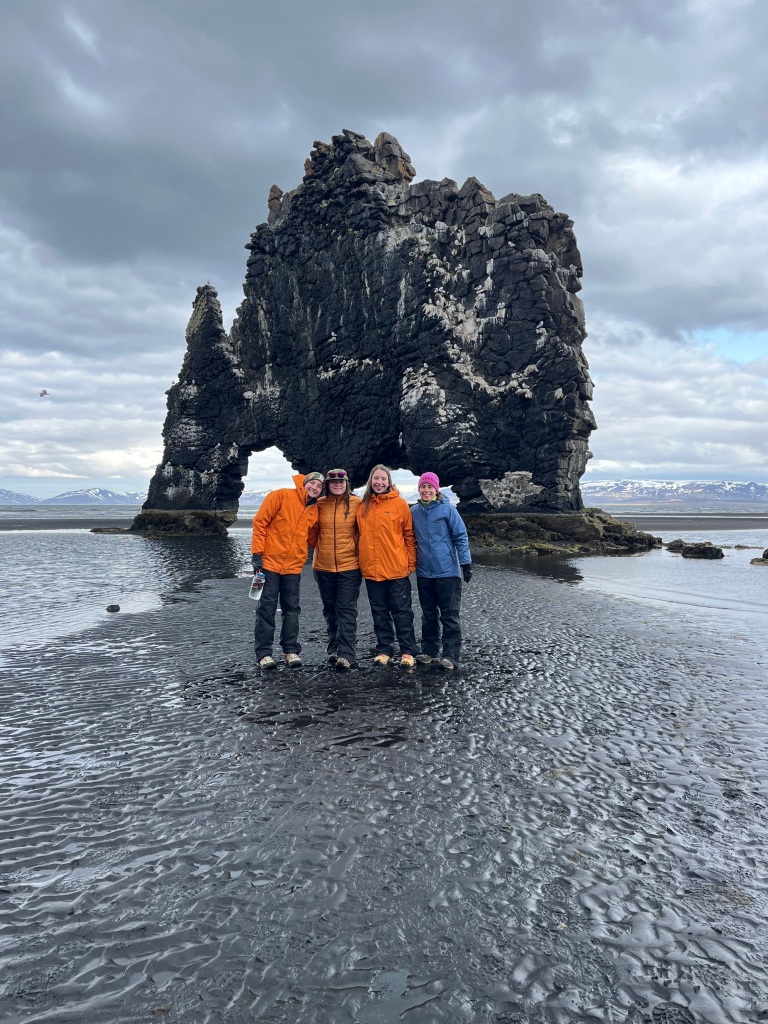
2. Sea arch + black sand beaches
- A sea arch is caused by wave erosion. A cliff face on the ocean is eroded to form a sea cave. The back of the cave weathers away, leaving the doorway to the cave still standing by it’s lonesome.
- Black sand beaches are common in Iceland because of the bedrock type (basalt). Basalt is a mafic or dark rock, hence why the beaches are black. This is common in volcanic areas, especially those that are on diverging tectonic plate boundaries.
- ALSO THIS AREA WAS SO FREAKING COOL WE 10/10 RECOMMEND (we also saw some seals).
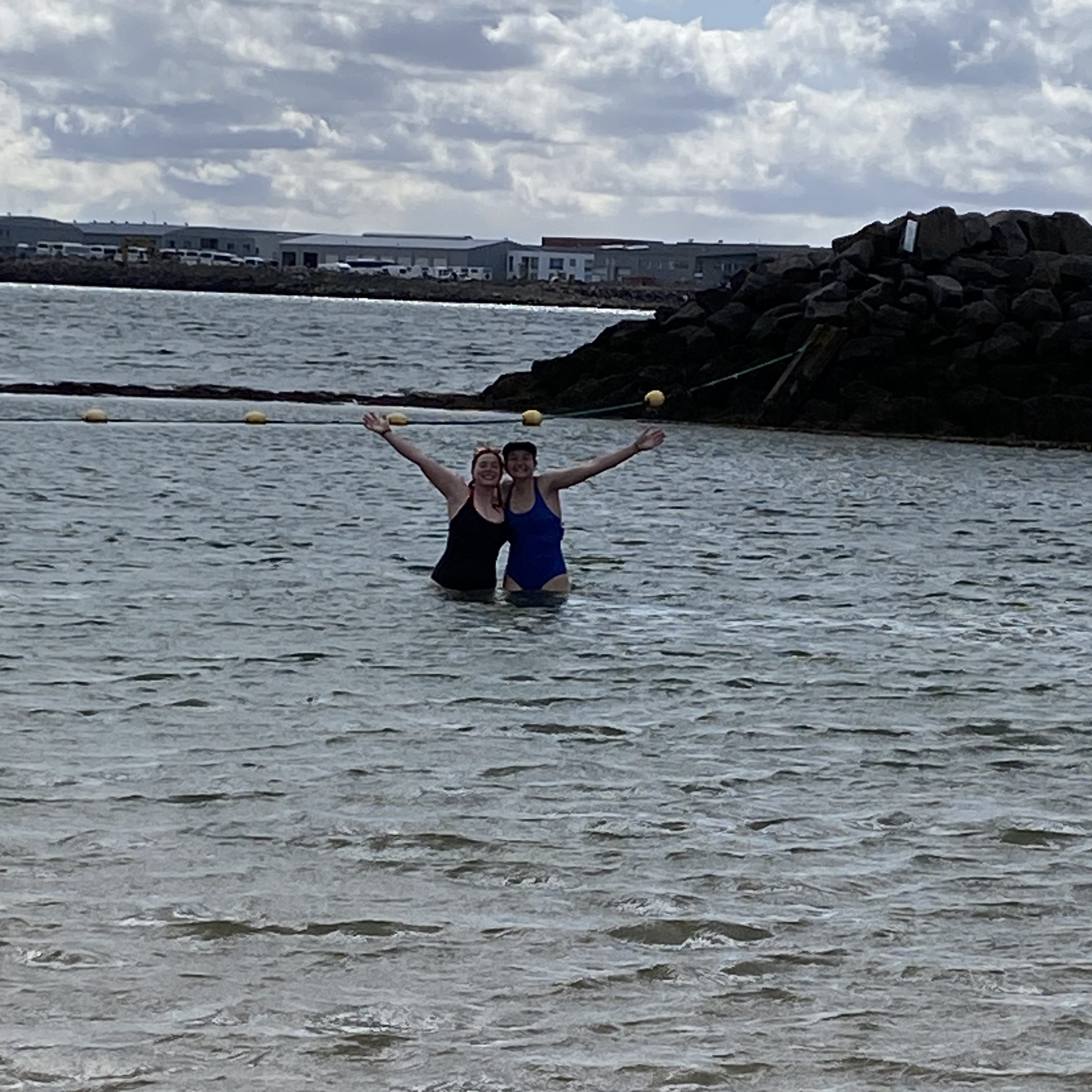
3. Reykjavík
- Capital city and home to roughly 1/3 of all Icelanders, this city had a cool little cave next to our study site.
- Holly and Riley also went swimming!
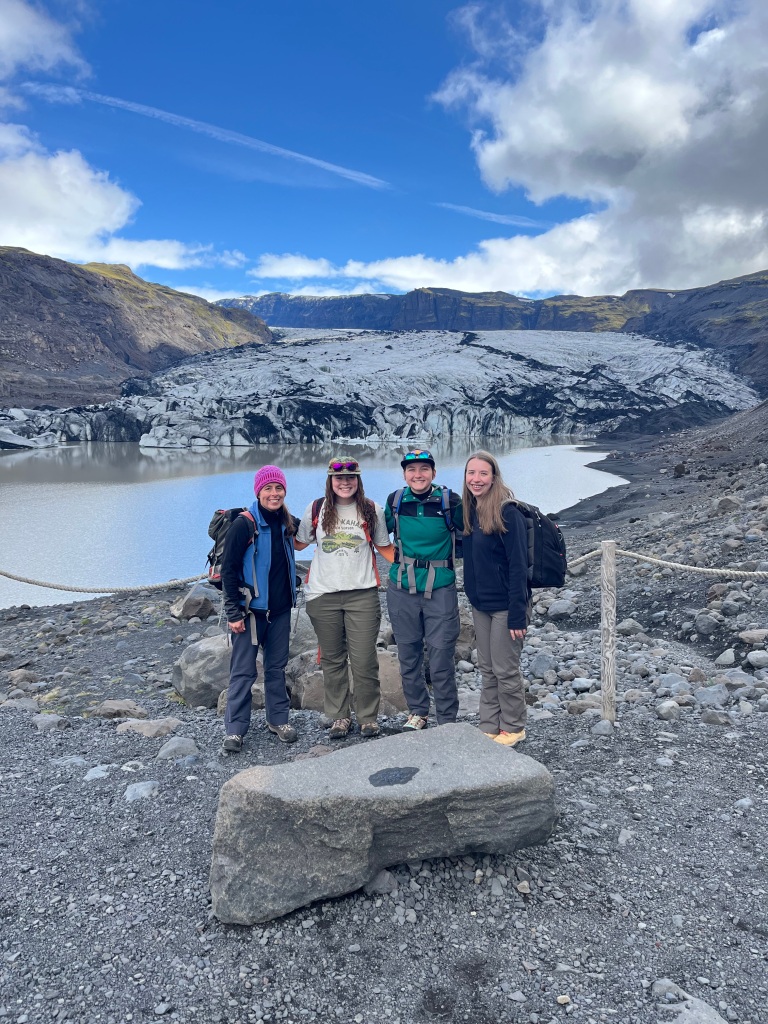

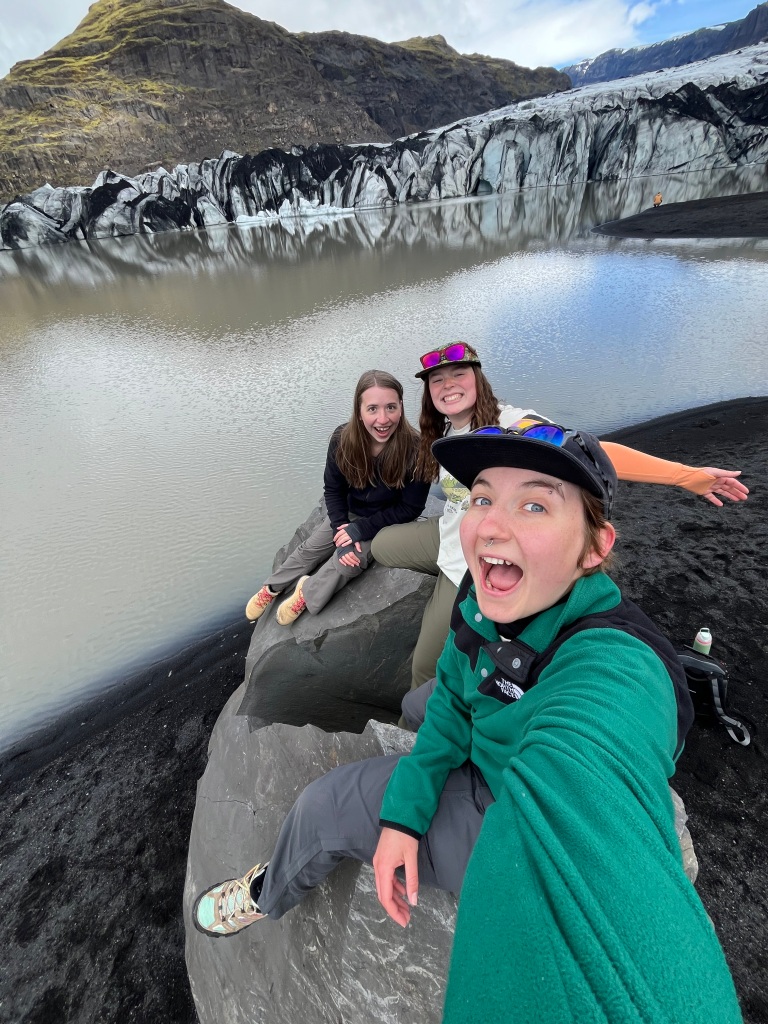


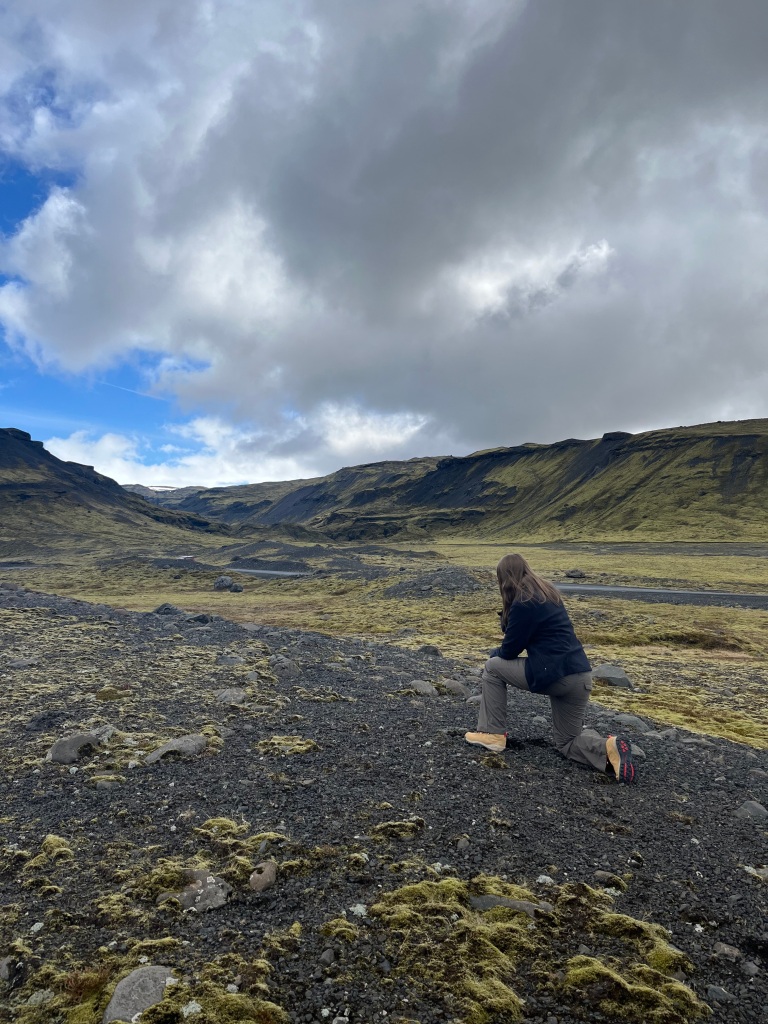
4. Sólheimajökull
- The one. THE ONLY. THE GLACIER OF THE TRIP!!!
- Sólheimajökull is an outlet glacier of a larger icecap, so while it looked massive (like so much ice), it’s only a small branch of the Mothership™.
- Here, we looked at till, striations, freeze thaw weathering, and plucking/abrasion (all on one rock!!)
- Freeze-Thaw weathering is when water freezes and thaws in cracks in a rock, causing it to split apart.
- Plucking is erosion where large pieces of ice remove parts of a rock, whereas abrasion is where ice scrapes away pieces of rock (like sandpaper).
- We also all touched glacial ice!

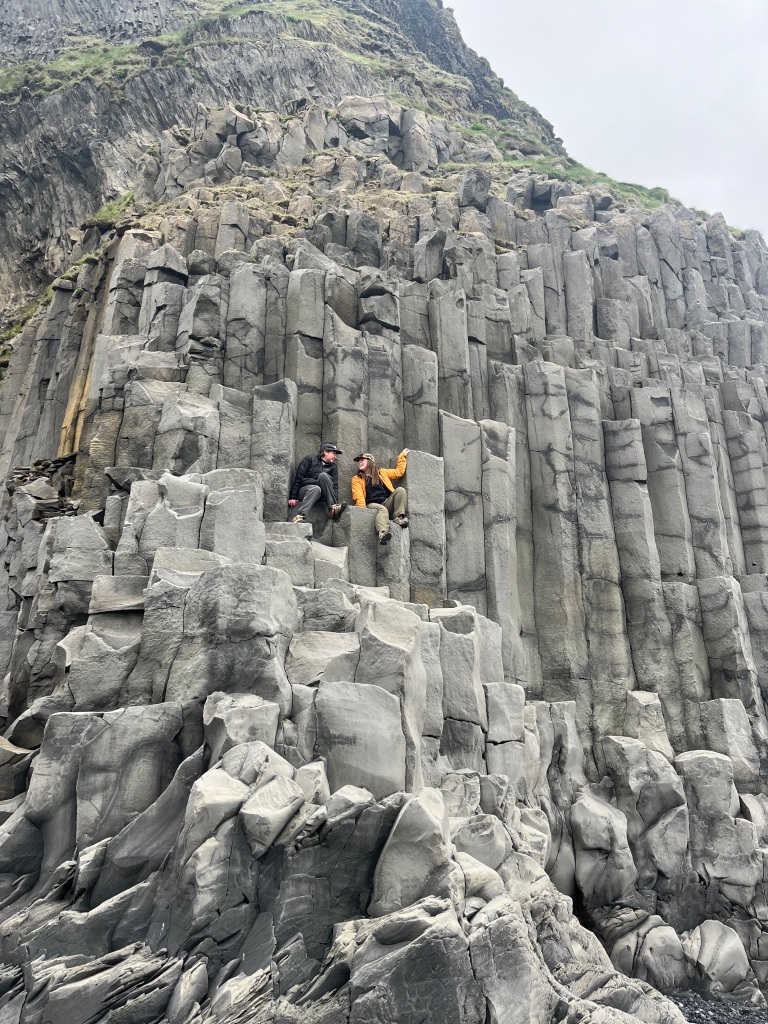

5. Columnar basalt
- A rock climber’s heaven (trust us, we climbed it)
- This rock formation happens when Lava cools. It’s completely natural (even though it looks like we started vertically stacking Lincoln Logs™) which makes it EVEN COOLER! (no pun intended).


6. Skógafoss + Seljalandsfoss + Gullfoss
- Skógafoss is one of the more famous waterfalls in Iceland, and as a result there were many underdressed tourists. (someone even brought an umbrella. clearly they were not aware that Iceland isn’t just rainy, but very windy). We were able to get super close to the waterfall and even did a heel click in front of it!
- Seljalandsfoss was yet another waterfall, but this one was cool because it drops in front of an overhang, meaning you can walk behind it!! It wasn’t raining that day, but if you saw us it certainly looked like it had torrentially downpoured. Pro Tip: wear your rain jacket + rain pants.
- Gullfoss is arguably the most visited waterfall in Iceland, as it’s close to the airport and accessible to those who fly into Keflavik for a layover.



7. Great geysir (+ Litli Geysir)
- It goes off every few minutes. The Geysir was pretty cool, and the water was pretty hot (no like seriously boiling), but arguably the best part of this stop was the horse shaped mirror in the Women and Children Area™ (Another pro tip: In Europe, WC stands for Water Closet, not Women and Children).

8. Thingvellir National Park (#riftzone)
- While we had wonderful weather the whole trip, Thingvellir introduced us to the phrases “Icelandic Summer” and “Horizontal Rain”. Never had we ever been blown through two tectonic plates before, but somehow we made that happen before we left. This is the area where the North American and Eurasian plates are diverging, or breaking apart, and it was super cool to walk (or be blown) through the two plates!!
If you made it this far, thank you for flying IcelandAir. “Ég trúi ekki að ég hafi borgað fimm dollara fyrir að pissa í dag” – Holly in Hvitserkur.

